What Pages Does My New Website Need?
- May 30th, 2022
-
Branding
Community Spotlight
Marketing
- Swarm Digital
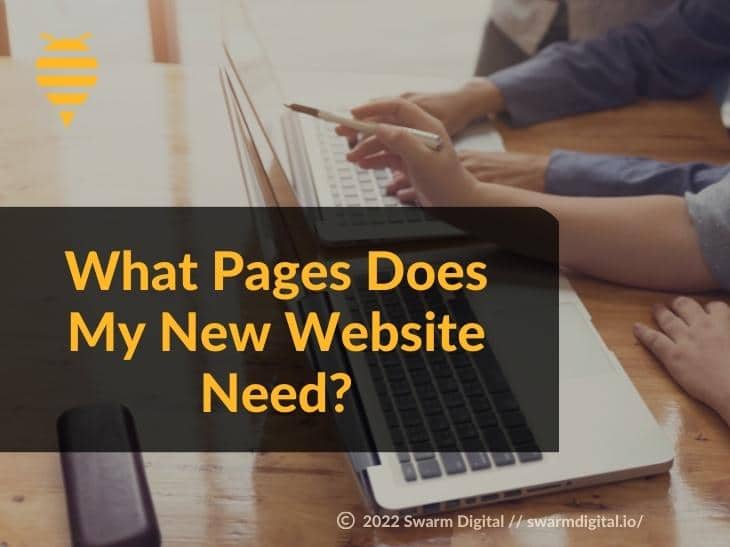
You’ve decided to get a new website. Excellent … now, where do you start? How do you provide direction to your designer? How should your site be organized—for instance, what pages should it have? That last question has more weight than you might think. In this article, you’ll learn how Swarm Digital uses website pages—which ones and how many—to thoughtfully position your business for growth.
What’s a Website For, Anyway?
What kind of site do you need? Webpage resources are numerous and opinionated. The web evolves quickly; sometimes, much-loved information becomes out-of-date mere weeks after it’s posted. So before we talk about what pages your new website needs, let’s start super basic. What is your site’s purpose? Well, that’s easy:
Your website is a tool to grow your business.
Perhaps you’re a brick-and-mortar store and want to generate foot traffic: your web presence is a tool to help create it. Maybe you’re an attorney: a great website directs potential clients to reach out. If you’re an educator, an easy-to-scan blog will position you as an authority in your field. Some sites serve multiple purposes with one goal: building a platform.
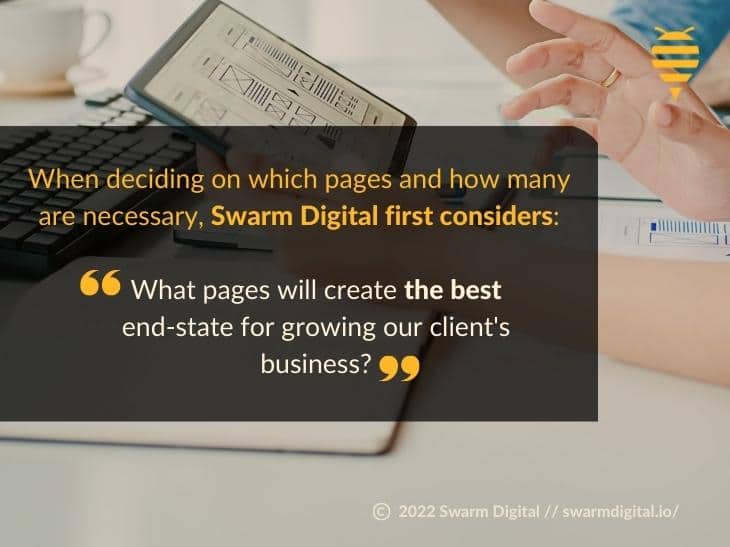
Quick parenthetical: sometimes it’s not that simple. Sometimes the objective isn’t necessarily to “grow a business.” Sometimes you might just need SEO services to optimize a site or raise awareness.
At Swarm Digital, that’s where we start. When deciding on which pages and how many are necessary, the first consideration is, “What pages will create the best end-state for growing our client’s business?” From there, we look at what website visitors are looking for.
You might, however, need a redesign or modification to your site rather than a “page-one rewrite.” Sometimes the big question is, “What web pages currently exist, and how do they fit into the new design?” We love taking existing designs and making them a part of a greater whole that serves your needs.
What Do Website Visitors Need?
Our brains are amazing: they can evaluate a webpage in a fraction of a second. This puts a significant onus on the web designer: your site should engage viewers’ attention, guide them through your product or service, and lead them to action. And whether you want a phone call, an in-person visit, or a consult, you want that decision rapidly.
How many pages does it take to do that? Often, only one. This example rocks: check out the website for Unleashed; we defy you not to scroll it from top to bottom. That is one single, gorgeous, engaging, hypnotic homepage.
One page—does that mean you only need one on your website? No, even Unleashed has a blog and testimonials page linked at the top. In addition, visitors will often enter a website from a number of different pages, not just the home page. See the example screenshot below–which page would you click on?
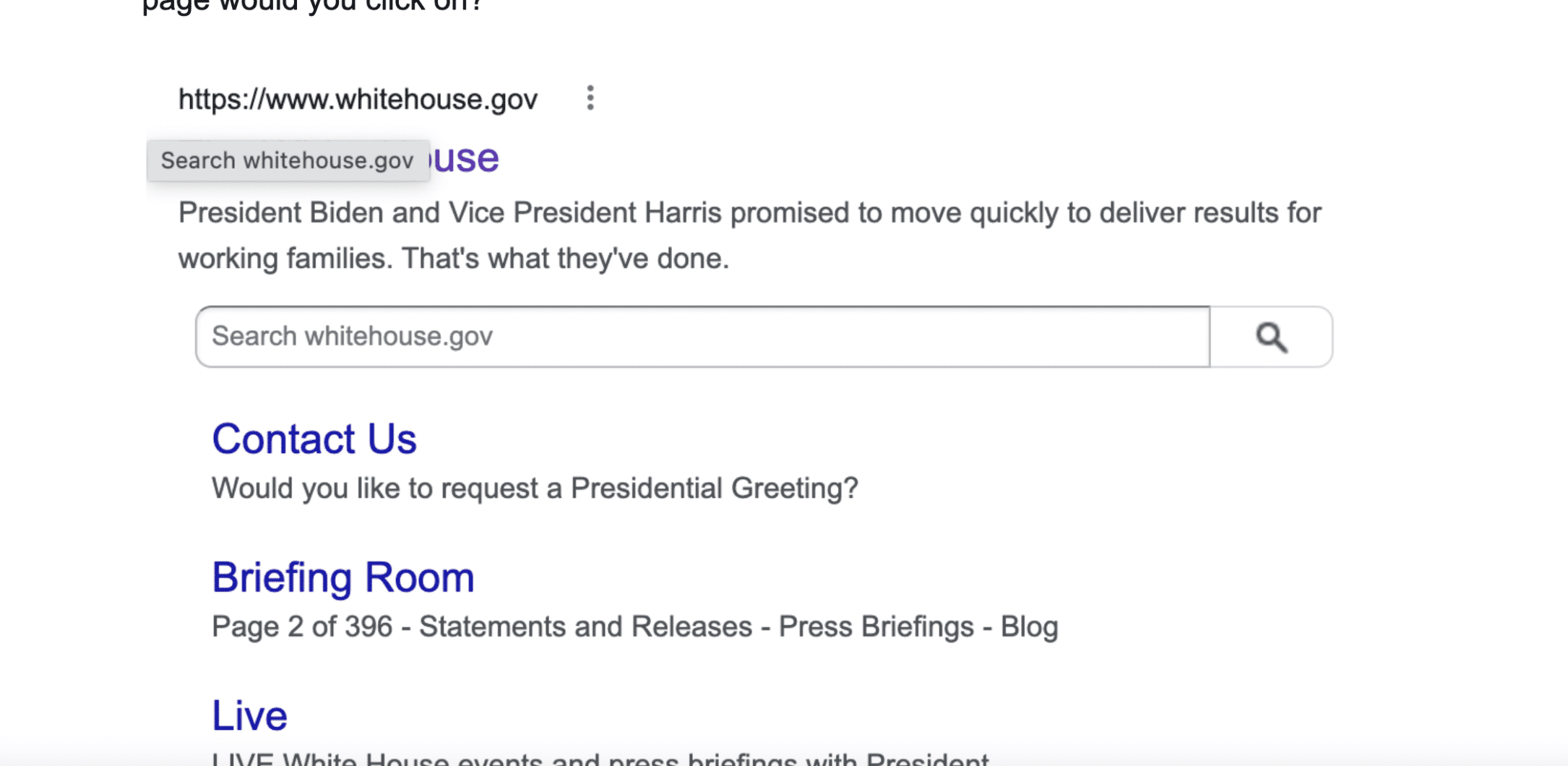
Each page can be “a door into your store.” Additionally, it’s helpful to have subpages that add clarity and provide additional information to visitors.
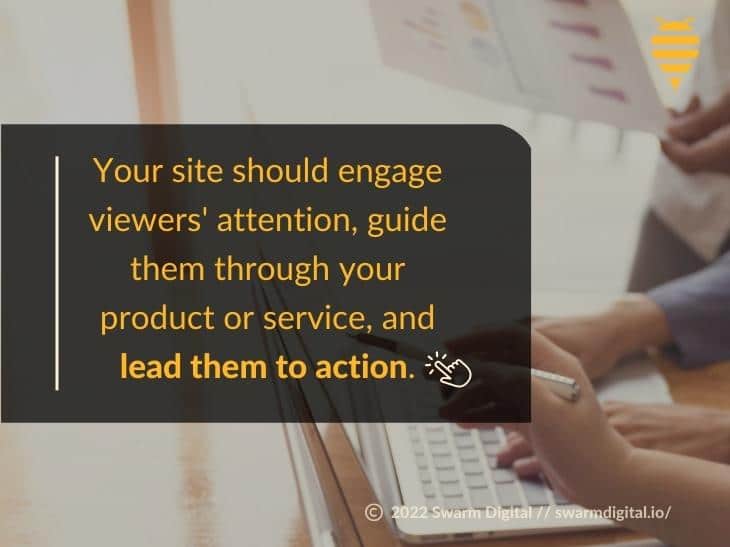
A Basic Buildout
There are many types of websites that fit bazillions of different needs. Here’s a list of pages many would deem essential:
- Home – Engage, educate, and lead viewers to a decision point. Many customers will only see your homepage before buying—or moving on.
- About – Provides an in-depth look at your brand, its values, and the people behind it, supplying a deeper connection between visitors and you. For a fantastic example, check out Giphy’s About Page—it’s as engaging as any on the web.
- Products/Services – Here, you set the hook, focusing visitors on your exceptional product or service. EarCouture created this outstanding product page. Our second example sells itself: it’s Jeff Bridges sitting on a breakfast sandwich.
- Blog – Tell Google—and your customers—you care. Add content to your blog regularly and thoughtfully. The blog has to serve the website with relevant, linkable content for the user. And search engines love to see a well-structured site and internal links help to understand a site’s structure.
- Contact – Lists what you’d find on a business card—phone number, directions, etc.
- Privacy Page – Google’s Terms require a website to publicly post their privacy policy if they’re going to use Google services, like analytics and search. Privacy pages are essential.
- The Rest – Pages for privacy policy, terms and conditions, “page not found,” a sitemap, and other minutiae may also be a part of a site layout.
What’s Best for Search Engine Optimization?
After website visitors, priority two—well, this one really ties with the first—is SEO. Search Engine Optimization should be a part of the design strategy from the word ‘go.’
How does the question “What pages should go on my new website?” apply? Search engines don’t scan the internet passively. They’re robust, AI-driven programs that comb sites for helpful information. Every page—home, about, contact, blog, products—matters here. Each, if executed properly, provides a chance that your site will appear above a competitor’s in search results. Every word on these pages is valuable; every segment of content can impact SEO.
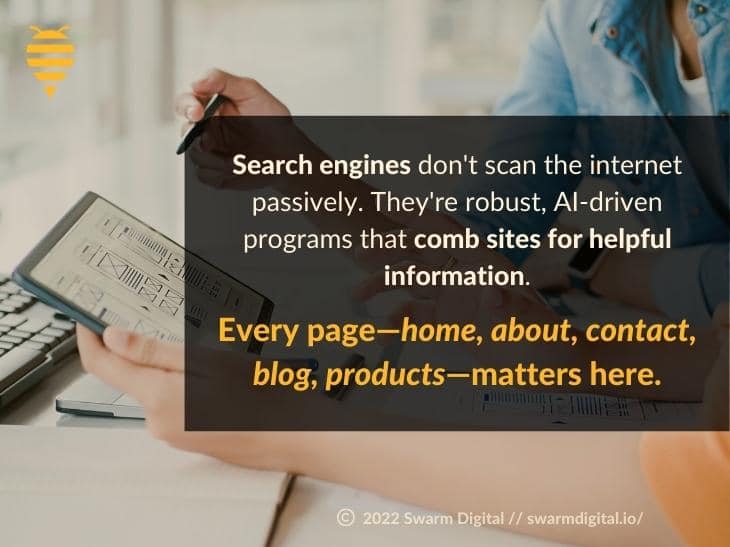
The Best Way to Make Websites for SEO
A “one-size-fits-all” mentality of web design won’t work for website visitors and search engines. At Swarm Digital, we’re tacticians. We’ll walk you through every design decision; We’ll explain what every page does and how it relates to growing you on the web.
One Swarm product—and it’s a banger—relates primarily to the pages on your site: the SwarmSEO WordPress plugin. This plugin automatically creates custom pages for neighborhoods, zip codes, and other locations in your area—an exceptional tool for driving hyperlocal traffic from your community to your door.
Don’t Stop There!
Once your new website is up, you need a strategy to continually grow your web presence. Update your blog. Get out there on social media. Solicit reviews from satisfied customers and clients. Develop backlinks from influencers online. Buy ads on Facebook and other platforms. Keep the momentum going.
We can help by adding exceptional firepower to your web growth plan. Swarm Digital utilizes the best tools available, including SEMRush, bringing experience, proven success, and time-saving effort to the table.
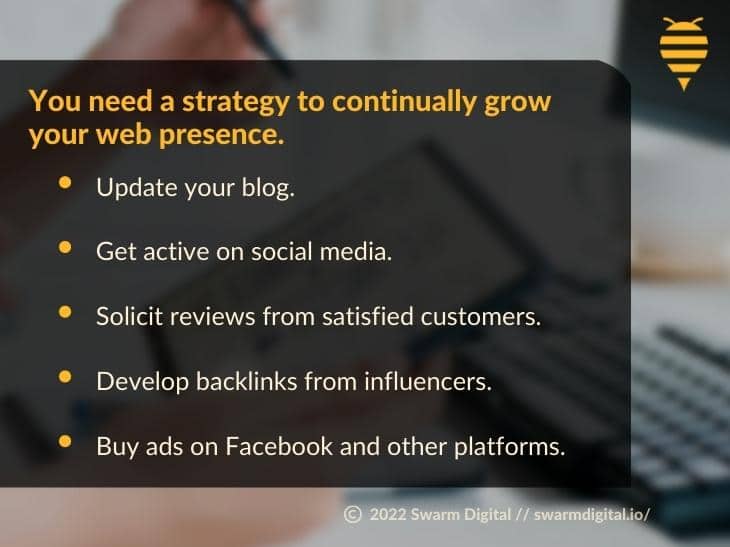
Check out what we’ve done for varied businesses like HotFitNYC, H & H Bagels, and Dan’s Dog Walking.
Build a Website That Grows Your Business with Swarm Digital
There are so many things to consider when designing a new website. Each is important, from color and flow to the little things like which pages it should have. Swarm Digital takes a strategic approach and is passionate about providing you an online tool that’ll grow your brand. Find out more now at +1 (855) 244-4407 or click here to consult with Swarm Digital.
